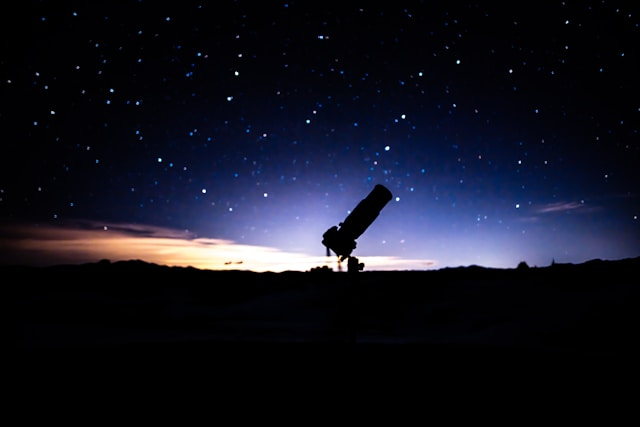A Comprehensive Overview of Astronomy and Telescopes
Introduction to Astronomy and the Evolution of Telescopes
While telescopes have been around for just over 400 years, the ancient science of astronomy has flourished exponentially during this time. There are now numerous types of telescopes, each with unique sizes and purposes, unlike a single key that opens one door. Each telescope is designed to capture a specific wavelength of the electromagnetic spectrum, providing us with a remarkable capability far beyond what the human eye can perceive, allowing us to explore the universe in unprecedented detail.
This guide offers an in-depth look at astronomy and the diverse types of telescopes that have revolutionized our understanding of the cosmos.
Optical Astronomy and Telescopes
We begin our exploration with optical astronomy, the most well-known branch that focuses on visible light. Optical telescopes use large mirrors or lenses to collect and focus light, enlarging our view of astronomical objects. Despite the faint signals they receive, often requiring millions or billions of particles to initiate a reaction, ground-based observatories with mirrors over ten meters in diameter, like the Keck Observatory in Hawaii, excel at gathering vast amounts of light from dim stars and galaxies. Optical telescopes are essential for studying star formation, detecting exoplanets, and mapping the Milky Way. However, their capabilities are somewhat limited by atmospheric distortions affecting incoming light.
Radio Astronomy and Telescopes
Radio astronomy explores the longest wavelengths of the electromagnetic spectrum, extending beyond visible light. Unlike optical telescopes, radio telescopes often use large dish antennas or extensive arrays spanning kilometers. These instruments capture and refine weak radio signals from sources such as pulsars, distant galaxies, and interstellar gas. Radio astronomy has profoundly altered our understanding of space-time, confirming the existence of quasars and detecting microwave background radiation that suggests the universe once existed as a singularity.
Infrared Astronomy and Telescopes
Infrared light, with wavelengths longer than visible light but shorter than radio waves, provides critical insights into circumstellar dust clouds, young stars shrouded in cocoons, and even planets within our solar system. Ground-based infrared observations are hindered by natural background emissions of infrared light. To mitigate atmospheric interference, infrared telescopes are often placed in space or atop high mountains. The Spitzer Space Telescope, operational until 2020, offered stunning images of distant galaxies and star-forming regions, greatly enhancing our understanding of these phenomena.
Ultraviolet Astronomy and Telescopes
Earth’s atmosphere absorbs most ultraviolet (UV) radiation, necessitating the use of space-based telescopes for UV observations. UV astronomy is crucial for studying hot stars, supernovae, and the formation of galaxies in the early universe. The Hubble Space Telescope, a cornerstone of modern astronomy, has revolutionized our view of the cosmos with its detailed images of deep-space objects, setting a new standard for observational UV astronomy.
X-ray Astronomy and Telescopes
X-rays, with even shorter wavelengths than UV light, are also absorbed by Earth’s atmosphere, requiring space-based telescopes for observation. X-ray telescopes reveal a violent universe, with X-rays emitted by black holes, neutron stars, and superheated plasma. Observatories like the Chandra X-ray Observatory have greatly enhanced our understanding of black holes, star remnants, and galaxy evolution.
Gamma-ray Astronomy and Telescopes
Gamma rays are the most energetic form of light and are difficult to observe due to their high energy, which can penetrate most materials. Gamma-ray telescopes, often combining ground-based and space-based components, are designed to detect these high-energy photons. Gamma-ray astronomy allows us to study extreme cosmic events like gamma-ray bursts and the powerful jets emitted by black holes, providing insight into some of the most energetic phenomena in the universe.
Space-based Telescopes and Observatories
Space-based observatories have several advantages: they can observe the entire electromagnetic spectrum without interference from Earth’s atmosphere and can operate continuously, unaffected by weather or daylight. Telescopes like Hubble and Spitzer have expanded our understanding of the universe by providing clear, unobstructed views of distant objects. Future space telescopes, such as the James Webb Space Telescope, are expected to deliver even deeper insights and more dramatic discoveries.
Ground-based Observatories and Telescopes
Despite the advantages of space-based telescopes, ground-based observatories remain vital. They excel in collecting data in visible and infrared wavelengths and provide detailed analyses of nearby objects. Advances in adaptive optics have significantly improved the resolution of ground-based telescopes by compensating for atmospheric distortions. Facilities like the Atacama Large Millimeter/Submillimeter Array (ALMA) are particularly effective at detecting faint radio waves from cold gas and dust clouds, crucial for studying the early stages of star and planet formation.
Conclusion
In conclusion, the diverse range of telescopes, each designed to capture specific wavelengths, provides a comprehensive picture of the universe. These technological marvels have enabled us to study the cosmos more accurately than ever before, from the grand scales of galaxies observed by X-ray telescopes to the intricate details of planets revealed by infrared telescopes. As we continue to explore the universe with advanced telescopes, we are likely to uncover new phenomena that will reshape our understanding of the cosmos and its many mysteries.

Leave a Reply